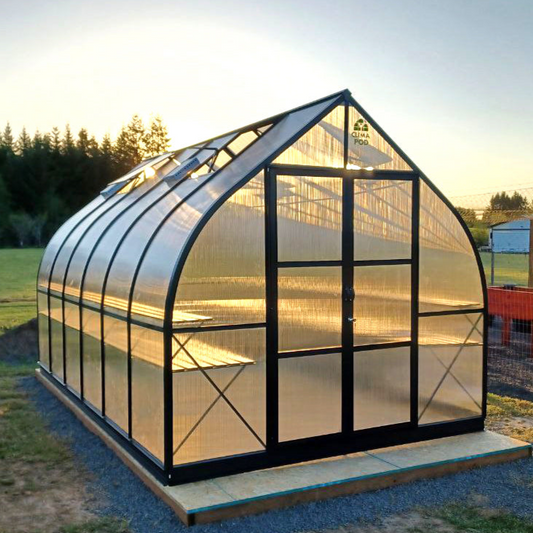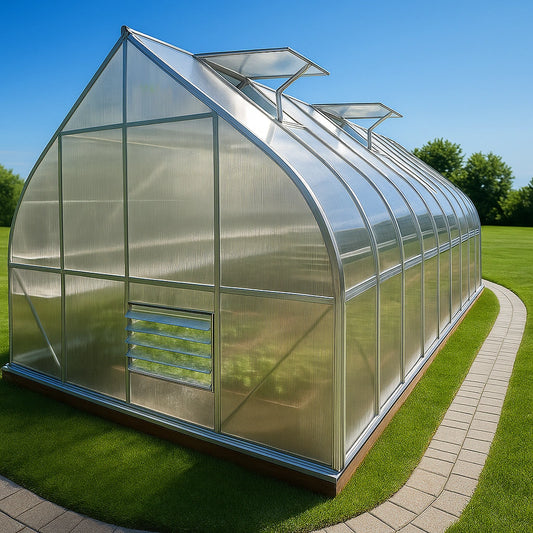
July Garden & Vegetable Patch Checklist
July may feel like a quiet month in the garden but don’t be fooled. While the pace slows, your plants still need steady attention. With fruiting berries, summer vegetables, and warm weather, July calls for smart maintenance rather than rest.
July Tasks in the Orchard & Yard Garden

Summer berries are ready for picking, fruit trees are setting, and plants need constant care to stay healthy.
Key orchard chores in July include:
- pest & disease protection,
- watering,
- feeding, and
- harvesting!

Pest & Disease Management
As fruits develop, plants become vulnerable. Scout every few days for leaf spots, chewed edges, or distorted shoots.
- Early detection: Catch issues early by regularly checking foliage and fruit.
- Preventive treatments: Apply fungicides or insecticidal soaps to avoid outbreaks.
- Treatment: For active infestations within 3 weeks of harvest, opt for gentle, bio-based sprays that are safe until harvest.
Birds like crows, thrushes, and starlings can wipe out your harvest in no time. Protect fruit crops with bird netting or scare devices.
Watering
Consistent moisture is essential. Trees often need 50–100 gallons per plant, apply water under the entire canopy, not just around the trunk.
Berry patches, especially raspberries, require frequent watering during their peak fruiting period. Direct water at the base, avoid overhead watering to minimize disease risk.
Feeding
July is prime feeding time. Apply a balanced fertilizer rich in nitrogen and potassium one or two times during irrigation. If new shoot growth is under 12", your plants are hungry.
Harvesting
Mid-summer brings berries: raspberries, currants, gooseberries, cherries, and more. Harvest ripe fruit frequently, overripe berries attract pests and spoil quickly. Use older berries for preserves and juices.
Fruit trees like early apples and pears also need attention. Heavy crops may break branches: use stakes or branch supports to prevent damage.
July Tasks in the Vegetable Garden
The vegetable patch requires even more action: watering, weeding, thinning, and pest control. Attention to detail now means a better harvest later.
- Onions: Protect against onion flies. Keep beds weed-free and well-irrigated, but stop watering 2–3 weeks before harvest.
- Tomatoes: Continue pruning suckers to focus growth on fruit. Combat late blight with biological sprays a few days before picking.
- Potatoes: Watch for late blight. Treat promptly with recommended fungicides. During dry spells, irrigate to boost yield.
- Cucumbers: Water consistently and feed regularly. Harvest often to encourage continued fruiting.
- Garlic: Summer garlic can be harvested now. Pull bulbs, tie into bundles, and hang to dry in a ventilated shed.
- Cabbage: Early varieties are ready, don’t delay harvest or they’ll crack. Keep later types watered, protected, and fed. Shade cauliflower heads from the sun using leaves or cardboard.
- Carrots: Thin seedlings to 1.5" apart, favoring strong plants. Top-dress with potash fertilizer.
- Beets: Thin to 4–5" apart. Side-dress lightly with a balanced organic feed.
You can also sow quick-maturing crops in July:
- dill, radish, turnip, lettuce, daikon radish, cilantro, spinach, and more.
In July, you enjoy the fruits of spring efforts. Gather harvests promptly, feed perennials, weed annuals, and keep everything well-watered garespecially during drought. And don’t forget: vigilance against pests and diseases is crucial.











